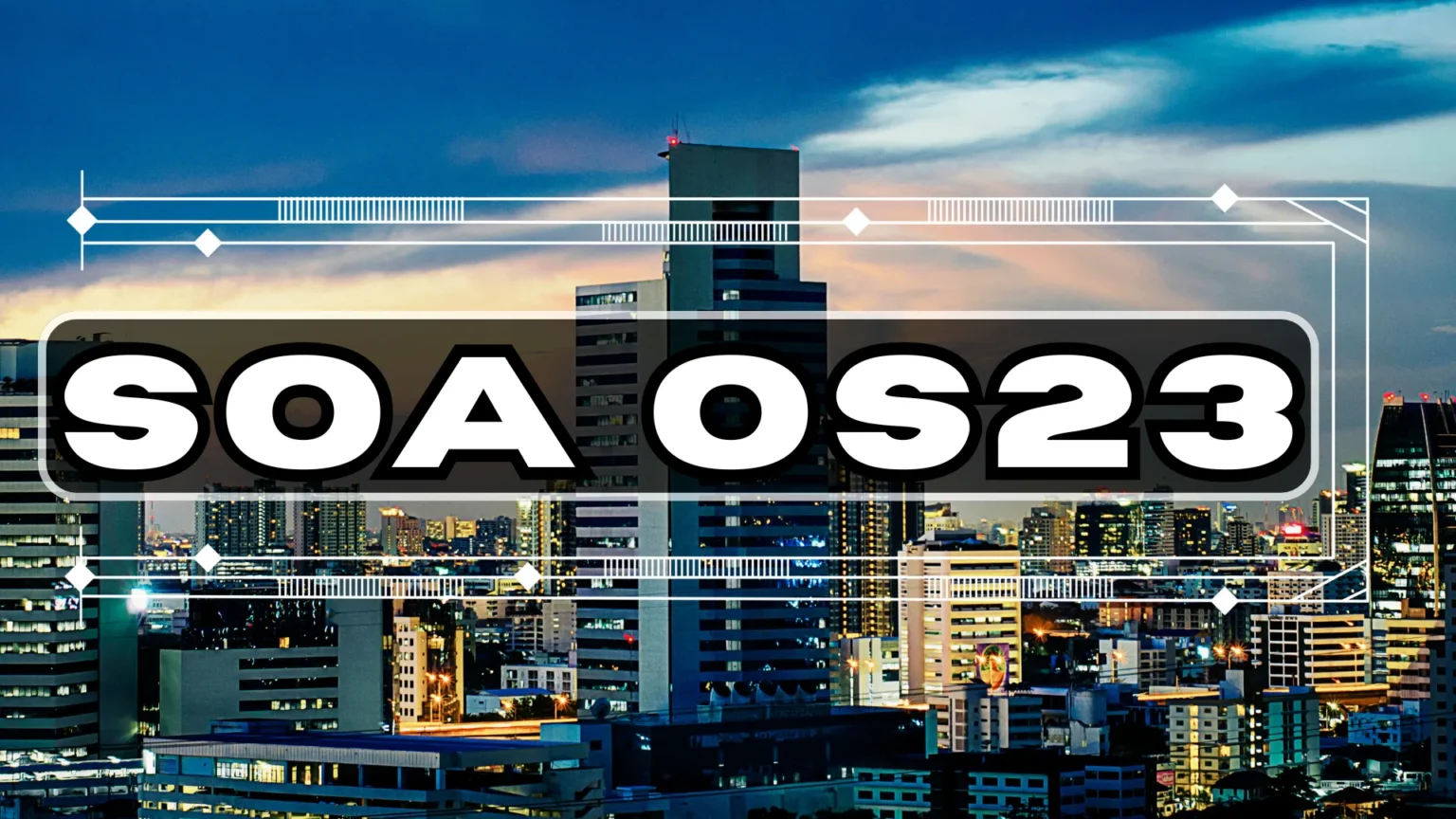Welcome to the world of SOA OS23—a name that might sound like something out of a sci-fi flick but is actually paving the way for the future of system architecture. If you’ve stumbled upon this term and are scratching your head, don’t worry—you’re not alone. Let’s break it all down in plain English and get to know this next-gen platform that’s shaking up the tech world.
What is SOA OS23?
Breaking Down the Acronym
Let’s start simple. SOA, or Service-Oriented Architecture, is a software design approach where applications deliver services to other components using a defined communication protocol. Basically, it’s about breaking software into reusable services.
OS23 refers to a new version or generation of an operating system built with SOA principles baked right into its core.
Is It Just Another Operating System?
Short answer: Nope. This isn’t your average OS like Windows or Linux. SOA OS23 isn’t just built for running apps—it’s designed for building, deploying, and scaling complex systems in cloud-native environments.
Why SOA OS23 Matters Right Now
Innovation Meets Scalability
In a world where software evolves faster than your phone’s battery drains, agility and scalability are everything. SOA OS23 takes a modular design approach that integrates seamlessly with DevOps workflows, Kubernetes environments, and serverless architectures.
SOA OS23 in the Real World
Businesses embracing microservices and containerization are choosing this architecture to accelerate delivery, lower expenses, and maintain agility. SOA OS23 offers the flexibility that modern tech stacks need.
Key Features of SOA OS23
Microservices Architecture
It performs exceptionally well across hybrid setups, multi-cloud infrastructures, and edge computing environments. Instead of one big monolithic app, everything is broken down into bite-sized services.
Agile Deployment
Roll out updates without taking down the whole system? Yes, please! SOA OS23 supports rolling updates, blue-green deployments, and more.
Scalability at its Core
Need to scale your payment system during Black Friday without touching the rest of your app? With SOA OS23, it’s a breeze.
Cloud-Native Capabilities
SOA OS23 is built for the cloud.It operates efficiently across hybrid setups, multi-cloud platforms, and edge environments. Whether it’s AWS, Azure, or Google Cloud—this OS plays well with everyone.
Enhanced Security Framework
From end-to-end encryption to policy-driven access control, SOA OS23 doesn’t take security lightly. It’s like having a bouncer at every microservice’s front door.
How SOA OS23 Stands Out From the Crowd
Compared to Traditional OS Platforms
Old-school operating systems are great for personal computing. But for enterprise-level apps that need to scale, adapt, and evolve on-the-fly, SOA OS23 wipes the floor with them.
Business Use Cases
Whether it’s a bank, an e-commerce platform, or a hospital system—SOA OS23 can integrate various systems while ensuring high availability and low latency.
Installation and Setup Guide
System Requirements
Before you jump in, make sure your environment supports the following:
- 64-bit processor
- Minimum 8 GB RAM
- Docker/Kubernetes support
- Internet access for pulling containers
Basic Installation Steps
- Download the SOA OS23 ISO or container image
- Boot from the image or deploy via Kubernetes
- Configure your environment variables
- Connect to the SOA Dashboard
- Start deploying services!
Common Installation Issues (and Fixes)
- Error 403 on dashboard? Try enabling API permissions in config.
- Slow deployment? Increase CPU limits in the container.
Developers, Rejoice! What Makes It Developer-Friendly
DevOps Integration
CI/CD is baked in. With built-in support for GitOps, Jenkins, and Helm charts, your dev team will feel right at home.
API-First Design
Every service interaction in SOA OS23 is powered by REST or gRPC APIs. That means automated documentation, version control, and easier testing.
Use Cases in Different Industries
Healthcare
SOA OS23 helps hospitals manage patient records, billing, and telemedicine tools through isolated, secure services.
E-commerce
From inventory systems to payment gateways, e-commerce brands can roll out updates to one part of the system without risking the whole thing crashing.
Government and Defense
With its military-grade encryption and fault tolerance, SOA OS23 is a strong contender for critical infrastructure.
Future of SOA OS23
Version Roadmap
Rumor has it, SOA OS24 will introduce AI-driven orchestration and zero-downtime migration—meaning smoother transitions and even more autonomy.
What to Expect in SOA OS24
Expect tighter integration with edge computing, 5G networks, and quantum-safe encryption. The future’s looking wild!
Final Thoughts
In a world that’s shifting rapidly toward modular, scalable, and secure systems, SOA OS23 is more than just another name in the tech landscape—it’s a movement. Whether you’re a developer, IT leader, or curious tech nerd, it’s worth keeping your eye on this evolving platform.
SOA OS23 isn’t just building the future. It is the future.
FAQs
1. Is SOA OS23 open source?
Yes! Most of its core components are released under open-source licenses, although enterprise versions come with premium features.
2. Can I run SOA OS23 on my local machine?
Technically yes, but it’s optimized for cloud and container environments like Kubernetes.
3. Is it suitable for small businesses?
Absolutely. The modular structure allows even small teams to benefit from scalability without overwhelming costs.
4. How does it handle system failures?
SOA OS23 features built-in support for failover handling, load balancing, and autonomous microservice recovery.
5. Where can I learn more or get community support?
You can find documentation on the official website, plus active discussions on GitHub, Reddit, and Stack Overflow.
